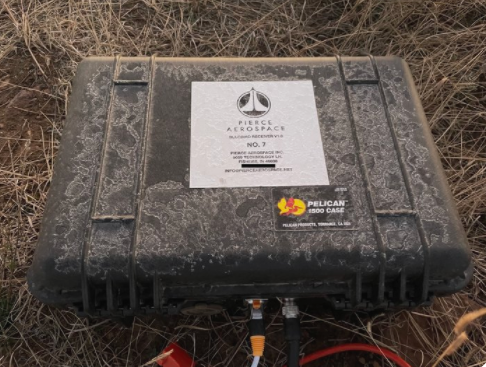Remote ID service provider Pierce Aerospace has partnered with the non-profit public safety organisation Droneresponders,to form a Remote ID working group composed of Droneresponders members from diverse organizational backgrounds.
Pierce Aerospace and Droneresponders mutually agree to develop this Remote ID Working Group to better capture public safety end-user feedback related to Remote ID technology and use cases. This Working Group will comprise of 12-15 Droneresponders organizational members, with one representative from the chosen organizational member and their alternate. Droneresponders will choose the organizational members to participate in the working group. Both Pierce Aerospace and Droneresponders agree that this group will be composed of a diverse group of first responder organizations and will meet at least once a month. This volunteer working group accelerates industry innovation and enhances the public safety UAS mission.
Pierce Aerospace’s Flight Portal ID (FPID) Remote ID suit consists of Remote ID beacons, Remote ID receivers, mobile applications – including public safety-specific applications, and supporting backend Remote ID services that are compliant with the ASTM F3411-22 Remote ID Standard and the FAA’s Remote ID Rule. Pierce Aerospace’s Remote ID systems support public safety and United States National Security operations.
Through its parent organization AIRT, Droneresponders has partnered with AUVSI and Commercial UAV Expo to provide national public safety UAS conferences, and hosts the most extensive public safety UAS resource repository in the world, with more than 800 guidance documents available to members. Droneresponders maintains additional partnerships with the National Institute of Standards Technology (NIST), NASA, and MITRE to advance the NIST Standard Test Methods for Public Safety UAS, NASA’s public safety CONOPS and UAS applications in wildfire operations, and MITRE’s public safety training curriculum standard. Droneresponders has worked with the FAA and public safety agencies to develop Tactical Beyond Visual Line of Sight (TBVLOS) waivers, granted to more than 300 public safety agencies, and recently created a Drone as a First Responder (DFR) working group which has supported many new DFR programs.
“UAS are a part of daily life. Over 5,000 public safety agencies have adopted a UAS program in the United States alone, and all public safety agencies need the ability to respond to UAS-related calls. We must engage with Public Safety organizations as we roll out Remote ID infrastructure,” said Pierce. “It is an honour that Dronesponders chose to work with Pierce Aerospace to set up this Remote ID working group, and we look forward to continuing to provide Remote ID solutions to public safety organizations in the US and worldwide.”
For more information visit:




